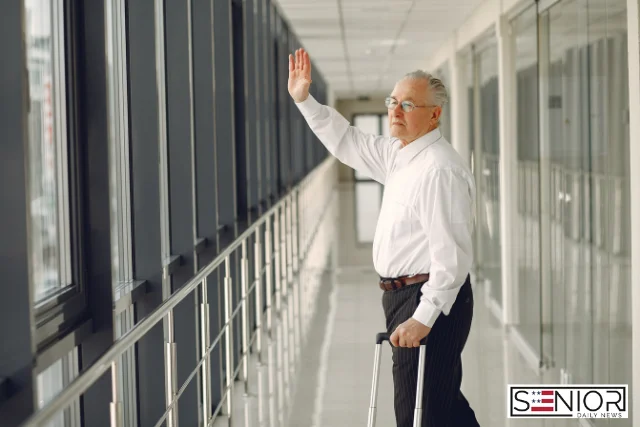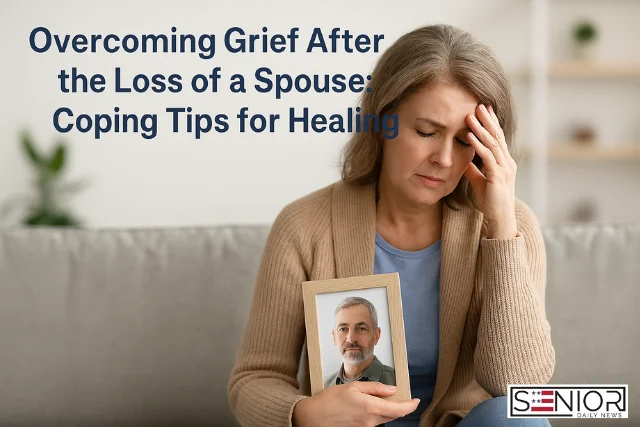Comfortable Flying Tips for Seniors With Mobility or Health Concerns

Air travel can be exciting, but for many older adults it also brings unique challenges. Long lines, cramped seating, and the fast pace of airports can make flying stressful—especially for those with mobility or health concerns. The good news is that with a bit of planning, flying can be much more comfortable and manageable. This guide offers practical flying tips for seniors to ensure your next journey is smooth, safe, and enjoyable.
Preparing Before the Trip
The key to a stress-free flight starts long before you head to the airport.
1. Talk With Your Doctor
If you have health conditions such as heart disease, arthritis, diabetes, or breathing difficulties, check with your doctor before booking. They can advise whether air travel is safe for you and provide tips on managing medications or mobility equipment during your trip.
2. Book Early and Choose the Right Seat
When booking, request an aisle seat near the front of the plane for easier access. Bulkhead or exit-row seats may provide more legroom, but exit rows are not available for passengers needing mobility assistance. If you need special accommodations, notify the airline in advance.
3. Request Special Assistance
Most airlines offer complimentary wheelchair service from check-in through boarding. If walking long distances is difficult, reserve this service when booking. Seniors with hearing or vision challenges can also request pre-boarding so they can settle in before the crowd.
4. Keep Medical Documents Handy
Carry a list of medications, your doctor’s contact information, and copies of important medical documents. If you have a pacemaker, oxygen requirement, or other condition that could affect security screening, notify TSA in advance.
Packing Smart for Comfort and Safety
Packing wisely can make a big difference in how comfortable your journey feels.
5. Medications and Essentials in Your Carry-On
Always keep medications in their original containers in your carry-on bag. Bring enough for your entire trip plus a few extra days in case of delays. Also pack glasses, hearing aids, and any small medical devices you rely on.
6. Dress for Comfort
Wear loose-fitting clothing, compression socks to support circulation, and slip-on shoes for easier security checks. Layers are helpful since airplane cabins can feel chilly.
7. Hydration and Snacks
Air travel can be dehydrating. Bring a refillable water bottle (you can fill it after security) and healthy snacks like fruit, nuts, or granola bars. This can help keep your energy steady and prevent fatigue.
Navigating the Airport Smoothly
Large airports can feel overwhelming, but seniors can take steps to reduce stress.
8. Arrive Early
Arriving two to three hours before your flight allows time for check-in, security, and rest breaks. Seniors traveling at a slower pace will benefit from the extra cushion.
9. TSA Cares Program
The Transportation Security Administration (TSA) offers assistance for travelers with medical conditions, disabilities, or mobility concerns. With prior notice, TSA agents can guide you through security in a more accommodating manner.
10. Take Breaks and Move Gently
If walking is tiring, pause at benches or designated rest areas. Light stretching and gentle walking before boarding helps maintain circulation and reduces stiffness.
Staying Comfortable in the Air
Once you’re on the plane, these flying tips for seniors can make the flight more enjoyable.
11. Stretch and Move Periodically
On longer flights, stand up and walk the aisle every hour or two if possible. If standing isn’t easy, do simple seated stretches like ankle rolls, knee lifts, or arm circles to promote circulation.
12. Stay Hydrated and Limit Caffeine
Caffeine and alcohol can contribute to dehydration. Water or herbal tea is a better choice for maintaining comfort in-flight.
13. Support for Back and Legs
Bring a small travel pillow or lumbar cushion to ease back discomfort. Placing a rolled-up sweater behind your lower back can also provide relief. For leg support, elevate your feet slightly with a carry-on bag under the seat in front of you.
14. Manage Noise and Light
Airplanes can be noisy and bright. Earplugs, noise-canceling headphones, and an eye mask can make resting easier, especially on longer flights.
15. Oxygen Needs and Special Equipment
If you use supplemental oxygen or CPAP machines, notify the airline in advance to make proper arrangements. Airlines are accustomed to assisting seniors with medical equipment.
Health and Safety Considerations
Traveling with health concerns requires a few extra precautions.
16. Preventing Blood Clots
Deep vein thrombosis (DVT) is a risk for seniors on long flights. Wearing compression socks, drinking plenty of water, and moving regularly can help prevent clots. If your doctor recommends, consider taking low-dose aspirin before travel.
17. Managing Medications Across Time Zones
If traveling internationally, adjust medication schedules gradually a few days before departure. Your doctor can provide guidance so you don’t miss doses or double up.
18. Be Mindful of Infections
Airports and airplanes have high foot traffic. Carry hand sanitizer, disinfectant wipes, and consider wearing a mask if you are concerned about respiratory illnesses.
After Landing: Arriving With Ease
Once you’ve reached your destination, there are still a few steps to ensure a smooth arrival.
19. Allow Extra Time for Connections
If you have a connecting flight, request wheelchair service in advance to ensure you reach your gate on time without overexertion.
20. Rest Before Activities
Give yourself time to adjust after your flight. Fatigue, stiffness, or jet lag may be stronger for seniors, so plan a light activity schedule for the first day.
21. Accessible Transportation at Destination
Check in advance if your hotel or transportation service provides wheelchair access, elevators, or ramps. This can help you avoid unnecessary stress upon arrival.
Final Thoughts
Traveling later in life should be about enjoyment, not stress. By planning ahead, asking for assistance when needed, and taking small steps to protect your health, air travel can remain a rewarding experience. Whether you’re visiting family, exploring new destinations, or heading to a sunny retreat, these flying tips for seniors can help make the journey just as pleasant as the destination.
FAQs About Flying Tips for Seniors
1. How early should seniors arrive at the airport?
It’s best to arrive at least two to three hours before a flight. This allows plenty of time for check-in, security screening, and any mobility assistance.
2. Are there discounts for senior travelers?
Some airlines occasionally offer senior discounts, though they are less common today. It’s worth asking when booking or checking membership programs like AARP for deals.
3. Can seniors bring walking aids like canes or walkers onto the plane?
Yes. Mobility aids like canes, walkers, or collapsible wheelchairs are permitted and do not count as part of carry-on limits. Airlines also allow storage for these items.
4. What if I need oxygen on the plane?
Notify your airline in advance. Most carriers allow portable oxygen concentrators but require medical approval. Never assume oxygen will be available without prior arrangements.
5. How can seniors make long flights more comfortable?
Wearing compression socks, stretching, drinking water, and bringing small comforts like a travel pillow or noise-canceling headphones can make long flights easier to handle.
6. Is travel insurance necessary for seniors?
Yes, travel insurance is strongly recommended for seniors. It can cover unexpected medical costs, trip cancellations, or lost luggage.
Image Source: Canva






